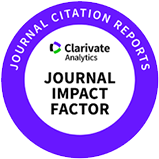Growth characteristics, blood biochemistry, histology, and metabolic profile of muscle and different tissues: Toxicity study of deoxynivalenol
Received: Dec 01, 2024 ; Revised: Feb 10, 2025 ; Accepted: Feb 11, 2025
Published Online: Feb 13, 2025
Abstract
Deoxynivalenol (DON) toxicity causes oxidative stress, immunological disorders, and gastrointestinal injury, which reduce animal survival and productivity. Pigs are particularly susceptible to DON; therefore, clear standards for DON levels in animal feed are essential. Therefore, we investigated growth characteristics, biochemistry, histology, and metabolite profiles of growing pigs fed dietary DON levels. Twelve pigs were randomized to one of four diets for 28 d: 1) CON, control group fed conventional diets; 2) T1, 1 mg; 3) T2, 3 mg; and 4) T3, 10 mg DON/kg conventional diet. The results revealed that the final body weight of the growing pigs in the T3 group was the lowest of all DON-treated groups (p < 0.05). Additionally, the T3 group demonstrated the highest blood alkaline phosphate levels, whereas the T2 and T3 treatment groups exhibited reduced lipase levels compared to the other groups (p < 0.01). Histological analysis showed that fibrosis increased in the muscle, liver, and various tissues, while apoptosis increased in the liver and ileum with increasing DON levels. Metabolomic profiling revealed that several metabolic pathways, such as purine metabolism, were involved in the weight loss induced by DON toxicity. In conclusion, our study suggests that DON levels above the maximum residue limits have adverse effects on growing pigs and that these effects are caused by altered metabolites.













